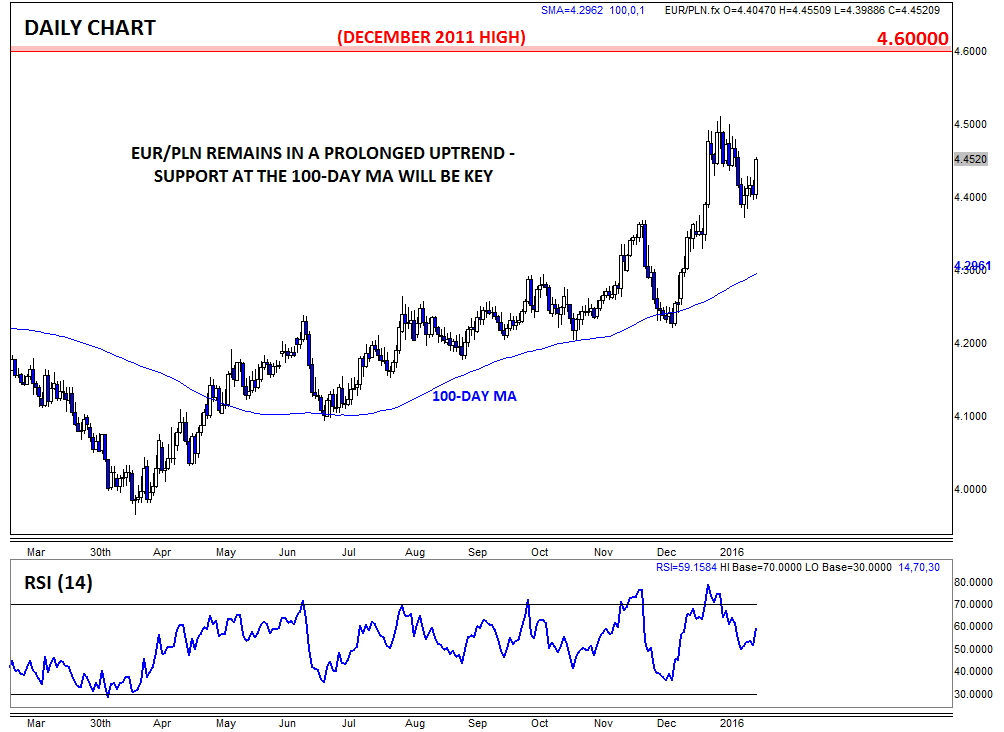As we noted earlier Monday morning, the day was shaping up as a classic “risk-off” day as global stocks, oil and high-yielding bonds continued to sell off in the US afternoon session. Naturally, that also means that emerging market currencies are having a rough go of it as well, with widely-followed EM currencies like the Turkish lira, South African rand, and Mexican peso all losing ground against the dollar. While the greenback fell relatively sharply across the board last week, the long-term trend for most EM currencies remains to the downside, prompting us to ask: “Can emerging markets capitalize on the falling currencies?”
Most of the headlines of late have focused on the negative effects of falling EM currencies, including increasing foreign debt costs and the at-the-margin hawkish (or at least less dovish) impact on EM central banks. However, a falling currency can also have economic benefits, especially on the manufacturing and export sectors of the economy. Therefore, we would expect countries with relatively large manufacturing sectors to thrive in an environment of falling EM currency values (not to mention persistently low commodity costs, which are often an important cost for manufacturers).
According to Capital Economics, some of the EM countries with relatively large manufacturing output include the Czech Republic (~32% of Gross Value Added), South Korea (~30% of GVA), Thailand (~28% of GVA), Malaysia (~25% of GVA), and Poland (~25% of GVA). Many of these countries’ currencies aren’t particularly actively traded (and some, like the Czech koruna, are essentially pegged to another currency – the euro in this case), but long-term traders looking to play this theme may want to focus on the Polish zloty.
While there are certainly serious political concerns about the current ruling Law and Justice Party (PiS), Poland’s economic situation is not quite as grave as some of its nearby neighbors; to wit, the country recently saw its highest inflation (lowest deflationary) figure of -0.5% in December and the historically high unemployment rate briefly dropped into the single digits for only the second time this century last year. Crucially, the central bank still maintains a positive interest rate of 1.5%, giving it ammo to fight against deflationary pressures.
Looking to the chart, EUR/PLN has been trending consistently higher since Q2 2015, and last month’s downgrade by ratings agency Standard and Poor’s only added more fuel to bullish flames. Moving forward, traders will want to keep a close eye on the 100-day moving average (currently near 4.30) – as long as rates remain above that level, the near-term trend will continue to point higher, perhaps toward the December 2011 high near 4.60. However, a break below the 100-day MA may signal that the beneficial effects of the zloty’s prolonged depreciation may finally be emerging.

Disclaimer: The information and opinions in this report are for general information use only and are not intended as an offer or solicitation with respect to the purchase or sale of any currency or CFD contract. All opinions and information contained in this report are subject to change without notice. This report has been prepared without regard to the specific investment objectives, financial situation and needs of any particular recipient. Any references to historical price movements or levels is informational based on our analysis and we do not represent or warranty that any such movements or levels are likely to reoccur in the future. While the information contained herein was obtained from sources believed to be reliable, author does not guarantee its accuracy or completeness, nor does author assume any liability for any direct, indirect or consequential loss that may result from the reliance by any person upon any such information or opinions.
Futures, Options on Futures, Foreign Exchange and other leveraged products involves significant risk of loss and is not suitable for all investors. Increasing leverage increases risk. Spot Gold and Silver contracts are not subject to regulation under the U.S. Commodity Exchange Act. Contracts for Difference (CFDs) are not available for US residents. Before deciding to trade forex and commodity futures, you should carefully consider your financial objectives, level of experience and risk appetite. Any opinions, news, research, analyses, prices or other information contained herein is intended as general information about the subject matter covered and is provided with the understanding that FOREX.com is not rendering investment, legal, or tax advice. You should consult with appropriate counsel or other advisors on all investment, legal, or tax matters. FOREX.com is regulated by the Commodity Futures Trading Commission (CFTC) in the US, by the Financial Conduct Authority (FCA) in the UK, the Australian Securities and Investment Commission (ASIC) in Australia, the Financial Services Agency (FSA) in Japan, the Investment Industry Regulatory Organization of Canada (IIROC) in Canada and the Securities and Futures Commission of Hong Kong (SFC) in Hong Kong.
